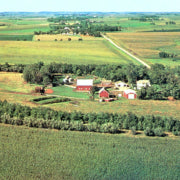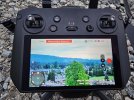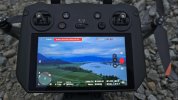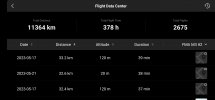You are using an out of date browser. It may not display this or other websites correctly.
You should upgrade or use an alternative browser.
You should upgrade or use an alternative browser.
Mavic 3 long range
- Thread starter lolo780
- Start date
Impressive!
Please share any tips you have discovered to maximize flight distance.
How much more efficient are you finding the Mavic 3 Enterprise props?
How much help from the wind?
What speed were you trying to maintain?
Have you altered any of the drone parameters, such as replacing Cinematic Mode with ATTI mode to take advantage of flying downwind without GPS speed braking?
It also appears you are in Sport mode, are deliberately not recording video, and have OA turned off. Are those also part of the secret sauce?
How did you decide when to turn around, to be sure to make it back?
Assuming you started at 100% battery, what remaining battery percentage did you land with, or did you go past 0%, and if so, by how many minutes?
It also appears you are flying from an elevated location over open ground below to optimize signal strength at long distance.
Please share more!
Please share any tips you have discovered to maximize flight distance.
How much more efficient are you finding the Mavic 3 Enterprise props?
How much help from the wind?
What speed were you trying to maintain?
Have you altered any of the drone parameters, such as replacing Cinematic Mode with ATTI mode to take advantage of flying downwind without GPS speed braking?
It also appears you are in Sport mode, are deliberately not recording video, and have OA turned off. Are those also part of the secret sauce?
How did you decide when to turn around, to be sure to make it back?
Assuming you started at 100% battery, what remaining battery percentage did you land with, or did you go past 0%, and if so, by how many minutes?
It also appears you are flying from an elevated location over open ground below to optimize signal strength at long distance.
Please share more!
Prop efficiency I'm not sure about, and I put them on because the stock rubber tipped props are easily damaged. There should be some gain from the thinner tip.
Wind was 2-3m/s outbound, and I flew higher at 18.3m/s. On the way home about 13m/s flying low to dodge wind. I watch barometric pressure and look for a combination of wind and air density that helps set records.
Firmware 900 is the last firmware that allows disabling forced auto landing, and all battery and landing parameters are off/minimum values. Flights modes are stock and I set a different speed on each mode to allow quick switching. LEDs are off.
I followed DJI's test settings: "* The flight time was measured in a controlled test environment. Specific test conditions are as follows: No wind, at sea level, constant flight speed of 32.4 kph, APAS off, AirSense off, camera parameters set to 1080p/24fps, video mode off, and flying from 100% battery to 0% battery. Results may vary depending on environment, usage scenario, and firmware version."
I also use some uptilt where possible to have less of the ground in view which should reduce processor overhead. Manual focus, manual WB, 5.8GHz manual and 10MHz bandwidth.
Turn was at 66%, on the ground at 3%. It's really difficult to predict when using wind and it's very easy to run out of battery if the wind picks up against you on the return leg. The RC Pro had to be turned sideways after the turnaround otherwise I was getting 1 bar only. It performed better than the RCN1, but not as good as I had been expecting.
Wind was 2-3m/s outbound, and I flew higher at 18.3m/s. On the way home about 13m/s flying low to dodge wind. I watch barometric pressure and look for a combination of wind and air density that helps set records.
Firmware 900 is the last firmware that allows disabling forced auto landing, and all battery and landing parameters are off/minimum values. Flights modes are stock and I set a different speed on each mode to allow quick switching. LEDs are off.
I followed DJI's test settings: "* The flight time was measured in a controlled test environment. Specific test conditions are as follows: No wind, at sea level, constant flight speed of 32.4 kph, APAS off, AirSense off, camera parameters set to 1080p/24fps, video mode off, and flying from 100% battery to 0% battery. Results may vary depending on environment, usage scenario, and firmware version."
I also use some uptilt where possible to have less of the ground in view which should reduce processor overhead. Manual focus, manual WB, 5.8GHz manual and 10MHz bandwidth.
Turn was at 66%, on the ground at 3%. It's really difficult to predict when using wind and it's very easy to run out of battery if the wind picks up against you on the return leg. The RC Pro had to be turned sideways after the turnaround otherwise I was getting 1 bar only. It performed better than the RCN1, but not as good as I had been expecting.
Yorkshire_Pud
Well-Known Member
How does wind help? If these were not one way trips then a tail wind when flying in one direction becomes a head wind when flying in the opposite direction.and help from the wind.
How does wind help? If these were not one way trips then a tail wind when flying in one direction becomes a head wind when flying in the opposite direction.
You use the wind high up in one direction and then duck down to treetop level where the air is calmer. Or vise versa. Traditional long range flying has always been to fly out into the wind, but I have had better success doing the opposite because often you have to gain altitude on the far end to maintain signal. But if you drop down on the return leg and set RTH height to minimum, you can safely fly low and the drone will pop up if signal is lost and continue flying home.

Best Windbreak Trees for Privacy and Wind Protection
Sometimes prevailing winds can be more than just a nuisance. We all know strong winds, dust, and blowing sand can be damaging to structures and equipment, but constant winds, even of moderate intensity, can hurt ornamental plants, too. This is where the best windbreak trees come in to play...


Flying lower than treetop height, 12.8m/s into a slight headwind.
Last edited:
I contacted DJI chat half an hour ago and asked about using Enterprise props vs. Standard props on the Mavic 3, and they confirmed the greater efficiency of the Enterprise props, supposedly by some 1% improvement. That 1% may be just made up. I wouldn't be surprised if it were closer to 5%, like with Master AirScrew props: "Up to 5% longer flight time compared to DJI OEM propellers due to the improved blade efficiency. Get additional about 2 minutes of extra flight time per battery." Good call using the Enterprise props!Prop efficiency I'm not sure about, and I put them on because the stock rubber tipped props are easily damaged. There should be some gain from the thinner tip.
Wind was 2-3m/s outbound, and I flew higher at 18.3m/s. On the way home about 13m/s flying low to dodge wind. I watch barometric pressure and look for a combination of wind and air density that helps set records.
Firmware 900 is the last firmware that allows disabling forced auto landing, and all battery and landing parameters are off/minimum values. Flights modes are stock and I set a different speed on each mode to allow quick switching. LEDs are off.
I followed DJI's test settings: "* The flight time was measured in a controlled test environment. Specific test conditions are as follows: No wind, at sea level, constant flight speed of 32.4 kph, APAS off, AirSense off, camera parameters set to 1080p/24fps, video mode off, and flying from 100% battery to 0% battery. Results may vary depending on environment, usage scenario, and firmware version."
I also use some uptilt where possible to have less of the ground in view which should reduce processor overhead. Manual focus, manual WB, 5.8GHz manual and 10MHz bandwidth.
Turn was at 66%, on the ground at 3%. It's really difficult to predict when using wind and it's very easy to run out of battery if the wind picks up against you on the return leg. The RC Pro had to be turned sideways after the turnaround otherwise I was getting 1 bar only. It performed better than the RCN1, but not as good as I had been expecting.
DJI chat rep stated that Standard Mavic 3 props are deliberately softer tipped for consumer safety, while Enterprise users presumably can handle the risk of stiffer tips to achieve better performance.
Picking perfect wind and air density certainly optimizes efficiency!
Forced autolanding is a pain, and lowers max speed and wastes power trying to fight the forced descent. I have mine still turned off in the parameters, and avoided .900 because of early imposition of RID, so good to know it cannot be disabled after .900.
What are the parameter settings to turn off all LED's? I have to cover mine with tape, which wastes battery power?
AirSense and APAS are always off because they are useless anyway for experienced flyers!
RC Pro has 4x the power output of the RC-N1, so good choice for signal.
If you are able to ride the wind at high altitude on the out-leg, changing Cine mode to ATTI mode in the Parameters should allow you to exceed the max speed when flying downwind in ATTI mode, or just ride the wind with minimal power use, and then switch back to Normal mode at lower altitude to return below the heavy head wind you flew out in.
66% seems like a good margin for safety on the return, especially after already reaching 16km away!
So, even though you were already pointed in the direction of the drone after the turnaround, turning the RC Pro 90° improved signal strength?
You left 3% in the tank that DJI drained in their test settings! HAH!
Good job!
Last edited:
Generally true. However, under ideal conditions, one can have a tail wind in opposing directions.How does wind help? If these were not one way trips then a tail wind when flying in one direction becomes a head wind when flying in the opposite direction.
Hot air balloon flyers take advantage of different wind directions at different altitudes and can theoretically fly back and forth all day in a very long box. Albuquerque New Mexico's International Balloon Fiesta attracts hundreds of hot air balloonists every year to fly in the Albuquerque Box in October!
"The Albuquerque Box is a wind pattern that sets up during the morning hours of Balloon Fiesta, mainly during October. In the early morning, during launch, winds at a lower flight level push balloons to the south toward the city. As balloons rise in altitude, upper-level winds will then carry balloons back to the north."
"Balloon pilots do not have a way to steer their hot air balloons. While they can control where the balloon flies vertically (by heating the air in the balloon to go higher), they completely rely on the wind to navigate direction."
Winds speed increases with elevation. Drone pilots can fly higher when flying downwind to take advantage of the tailwind on the out-leg, and then fly low on the return, below the wind, minimizing the headwind.
Great strategy and execution!You use the wind high up in one direction and then duck down to treetop level where the air is calmer. Or vise versa. Traditional long range flying has always been to fly out into the wind, but I have had better success doing the opposite because often you have to gain altitude on the far end to maintain signal. But if you drop down on the return leg and set RTH height to minimum, you can safely fly low and the drone will pop up if signal is lost and continue flying home.
View attachment 164559View attachment 164560
Best Windbreak Trees for Privacy and Wind Protection
Sometimes prevailing winds can be more than just a nuisance. We all know strong winds, dust, and blowing sand can be damaging to structures and equipment, but constant winds, even of moderate intensity, can hurt ornamental plants, too. This is where the best windbreak trees come in to play...myperfectplants.com
Flying lower than treetop height, 12.8m/s into a slight headwind.
I contacted DJI chat half an hour ago and asked about using Enterprise props vs. Standard props on the Mavic 3, and they confirmed the greater efficiency of the Enterprise props, supposedly by some 1% improvement. That 1% may be just made up. I wouldn't be surprised if it were closer to 5%, like with Master AirScrew props: "Up to 5% longer flight time compared to DJI OEM propellers due to the improved blade efficiency. Get additional about 2 minutes of extra flight time per battery." Good call using the Enterprise props!
DJI chat rep stated that Standard Mavic 3 props are deliberately softer tipped for consumer safety, while Enterprise users presumably can handle the risk of stiffer tips to achieve better performance.
Picking perfect wind and air density certainly optimizes efficiency!
Forced autolanding is a pain, and lowers max speed and wastes power trying to fight the forced descent. I have mine still turned off in the parameters, and avoided .900 because of early imposition of RID, so good to know it cannot be disabled after .900.
What are the parameter settings to turn off all LED's? I have to cover mine with tape, which wastes battery power?
AirSense and APAS are always off because they are useless anyway for experienced flyers!
RC Pro has 4x the power output of the RC-N1, so good choice for signal.
If you are able to ride the wind at high altitude on the out-leg, changing Cine mode to ATTI mode in the Parameters should allow you to exceed the max speed when flying downwind in ATTI mode, or just ride the wind with minimal power use, and then switch back to Normal mode at lower altitude to return below the heavy head wind you flew out in.
66% seems like a good margin for safety on the return, especially after already reaching 16km away!
So, even though you were already pointed in the direction of the drone after the turnaround, turning the RC Pro 90° improved signal strength?
You left 3% in the tank that DJI drained in their test settings! HAH!
Good job!
Set LED to 0.
The pre set speeds are enough for long range flying.
After the turn, signal was dropping to 1 bar until I turned the RC Pro to horizontal polarization. I'm assuming because the rear antennas are working better and they are horizontal in the arms.
Doesn't radio transmission have a lot to do with how far the aircraft could travel from the controller?
And that is a function of terrain and the overall EM environment of the locale?
Like do it near a big city, with high rise buildings, would you get the same distance?
And that is a function of terrain and the overall EM environment of the locale?
Like do it near a big city, with high rise buildings, would you get the same distance?
Bob in Savannah
Masters Patron
- Joined
- Aug 6, 2018
- Messages
- 1,056
- Reactions
- 1,950
- Age
- 58
- Location
- Savannah, GA. USA
- Site
- instagram.com
Turning all these options/features OFF is obviously key for such an accomplishment.
I'm almost more amazed at your ability to restrain your rising tension as the drone flies further and further away than I am with DJI and this amazing beast of a drone. +1 to both of you.
I regularly fly my M3 out over the intercoastal waterways here in Savannah up to nearly 5 miles (full bars, of course) but always turn around more just because i start really thinking about $2k out there 5 miles away..lol.. I always have nearly 60-65% battery when I return so I can see where I could get MUCH further if I had the balls. Kudos to you, sir.
This drone is a TANK.
I'm almost more amazed at your ability to restrain your rising tension as the drone flies further and further away than I am with DJI and this amazing beast of a drone. +1 to both of you.
I regularly fly my M3 out over the intercoastal waterways here in Savannah up to nearly 5 miles (full bars, of course) but always turn around more just because i start really thinking about $2k out there 5 miles away..lol.. I always have nearly 60-65% battery when I return so I can see where I could get MUCH further if I had the balls. Kudos to you, sir.
This drone is a TANK.
Yes, absolutely.Doesn't radio transmission have a lot to do with how far the aircraft could travel from the controller?
And that is a function of terrain and the overall EM environment of the locale?
Like do it near a big city, with high rise buildings, would you get the same distance?
Yes, definitely!
Certainly not.
Cool!Set LED to 0.
The pre set speeds are enough for long range flying.
After the turn, signal was dropping to 1 bar until I turned the RC Pro to horizontal polarization. I'm assuming because the rear antennas are working better and they are horizontal in the arms.
I still think ATTI mode should get you farther in any tailwind, as you ride the wind without any wasted GPS braking, which limits top speed down wind. However, if you reduce the ground speed to perfectly compensate for the wind, you might get the same result. Most long distance flyers fly full throttle in Normal mode at roughly 31mph, so ATTI mode is better for them downwind.
How do you have the antennas positioned on the RC Pro during flight?
In the normal, fully upright, vertical position, essentially perpendicular to the ground, facing the drone?
So, with the antenna positions unchanged, you then just rotated 90° to the right at the turnaround? I've never tried that before, but it it’s certainly worthy of trying!
What is the terrain like over the flight path? Does it drop off below the launching area, where you have clear LOS throughout the flight?
Jamesz
Well-Known Member
YonnyMestampo
Member
Please explain. I understand that you're not the OP, but you must have some confidence in your conclusions to say 100% on both counts.100% each
According to the first image posted, the drone was more than 16,000 meters from the launch point during the flight. Legal?
Is 3% battery capacity on landing? Safe? I did some over-water cross country flights in Cherokee 180s with three passengers on board and none of us would have been comfortable landing in the Bahamas with 1.5 gallons of fuel in the tanks (3% of the 50-gallon fuel capacity).
YonnyMestampo
Member
Yes but you know the answer already. Don't need to ask if it's legal and safe bro.Please explain. I understand that you're not the OP, but you must have some confidence in your conclusions to say 100% on both counts.
According to the first image posted, the drone was more than 16,000 meters from the launch point during the flight. Legal?
Is 3% battery capacity on landing? Safe? I did some over-water cross country flights in Cherokee 180s with three passengers on board and none of us would have been comfortable landing in the Bahamas with 1.5 gallons of fuel in the tanks (3% of the 50-gallon fuel capacity).
Don't feed the trolls and they'll move on to another threadYes but you know the answer already. Don't need to ask if it's legal and safe bro.
Yes but you know the answer already. Don't need to ask if it's legal and safe bro.
More importantly, there's no need to frivolously post known false information.
YonnyMestampo
Member
Welcome to the internet.More importantly, there's no need to frivolously post known false information.
Similar threads
- Replies
- 1
- Views
- 596
- Replies
- 1
- Views
- 352
DJI Drone Deals
New Threads
-
-
-
3 We sail to a place YouTube has never seen. Aru Islands.
- Started by Vernon
- Replies: 0
-
-
Members online
Total: 3,232 (members: 12, guests: 3,220)













